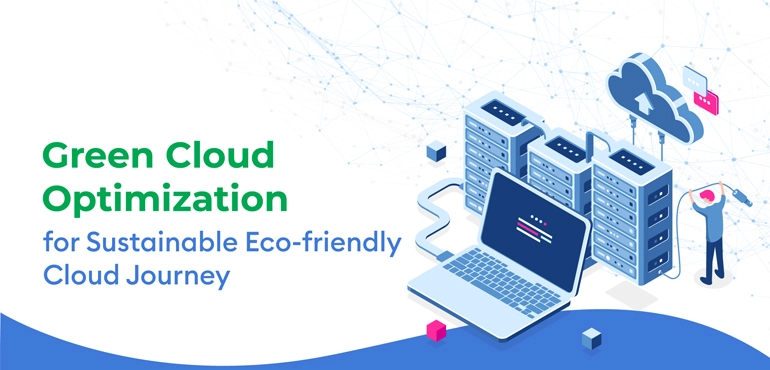Capture the true value of digital technology
We are Microsoft partners and excel in cloud operations, digital transformation and engineering services. At Csharptek, we believe in technological progress – that strides in digital technology, business intelligence and science can lead to better business outcomes, save costs and better human lives. We are at the forefront of innovation and help clients explore the evolving world of cloud and digital technology. We adopt an agile approach to technology, have the business intelligence, technological know-how and next-gen expertise to deliver unprecedented solutions to improve service performances and ensure customer delight.
Contact UsContact Info
- 199/A, Mandaliya Nagar, Bariatu, Ranchi
- +91-9334646668
- info@csharptek.com
- Week Days: 09.00 to 18.00 Saturday and Sunday: Closed
Sustainability in Cloud Computing
- Admin

In today's digital age, cloud computing has become a crucial tool for businesses and individuals alike, enabling them to store, process, and access data and applications remotely. As the demand for cloud services continues to grow exponentially, so does the need to address its environmental impact. This is where sustainability in cloud computing comes into play, emerging as a new way of optimization that not only focuses on efficiency and cost savings but also considers the environmental footprint of cloud computing.
Cloud computing has long been lauded for its potential to optimize resources and reduce costs for businesses. By leveraging shared computing resources and virtualization, cloud providers can achieve economies of scale, resulting in more efficient resource utilization and reduced energy consumption compared to traditional on-premises data centers. This optimization not only lowers operational costs for businesses but also reduces their carbon footprint, as fewer physical servers and data centers are required. However, sustainability in cloud computing goes beyond just optimizing resource utilization and energy consumption. It encompasses a broader perspective that considers the entire lifecycle of cloud computing, from the manufacturing of hardware components to the disposal of electronic waste. It also involves promoting renewable energy sources, minimizing greenhouse gas emissions, and implementing environmentally responsible practices throughout the supply chain.
One key aspect of sustainability in cloud computing is the use of renewable energy sources to power data centers. Many cloud providers are now investing in renewable energy projects such as solar and wind farms and purchasing Renewable Energy Certificates (RECs) to offset their carbon emissions. By transitioning to renewable energy sources, cloud computing can contribute to the reduction of greenhouse gas emissions and help combat climate change. Another essential element of sustainability in cloud computing is the efficient management of electronic waste (e-waste). As technology evolves, hardware components become outdated and need to be replaced, resulting in a significant amount of e-waste. Cloud providers need to adopt responsible e-waste management practices, such as recycling and proper disposal, to minimize the environmental impact of e-waste.
In addition, sustainable cloud computing involves promoting circular economy principles, such as designing for durability, repairability, and recyclability. This includes extending the lifespan of IT equipment through refurbishment, repair, and upgrades, and reducing the need for frequent replacement of hardware. By embracing circular economy practices, cloud providers can reduce waste and resource consumption, leading to a more sustainable approach to cloud computing.
Furthermore, sustainability in cloud computing also includes promoting energy-efficient data center designs and cooling technologies. Data centers are known to consume significant amounts of energy for powering and cooling servers. Implementing innovative designs, such as using free air cooling, liquid cooling, and advanced power management techniques, can significantly reduce the energy consumption of data centers, making them more sustainable and environmentally responsible.
Sustainability in cloud computing also involves promoting transparency and accountability in environmental reporting. Cloud providers should be transparent about their sustainability initiatives, including their efforts to reduce energy consumption, use renewable energy sources, manage e-waste, and adopt circular economy practices. This promotes accountability and allows customers and stakeholders to make informed choices based on the environmental performance of cloud providers.
By integrating sustainability into cloud computing practices, we can create a more environmentally responsible and sustainable approach to meeting the growing demand for cloud services, benefiting businesses, individuals, and the planet. It is time for the cloud computing industry to embrace sustainability as a core principle and contribute to a greener future.
- Share This Post :
- Tweet





Contact Us